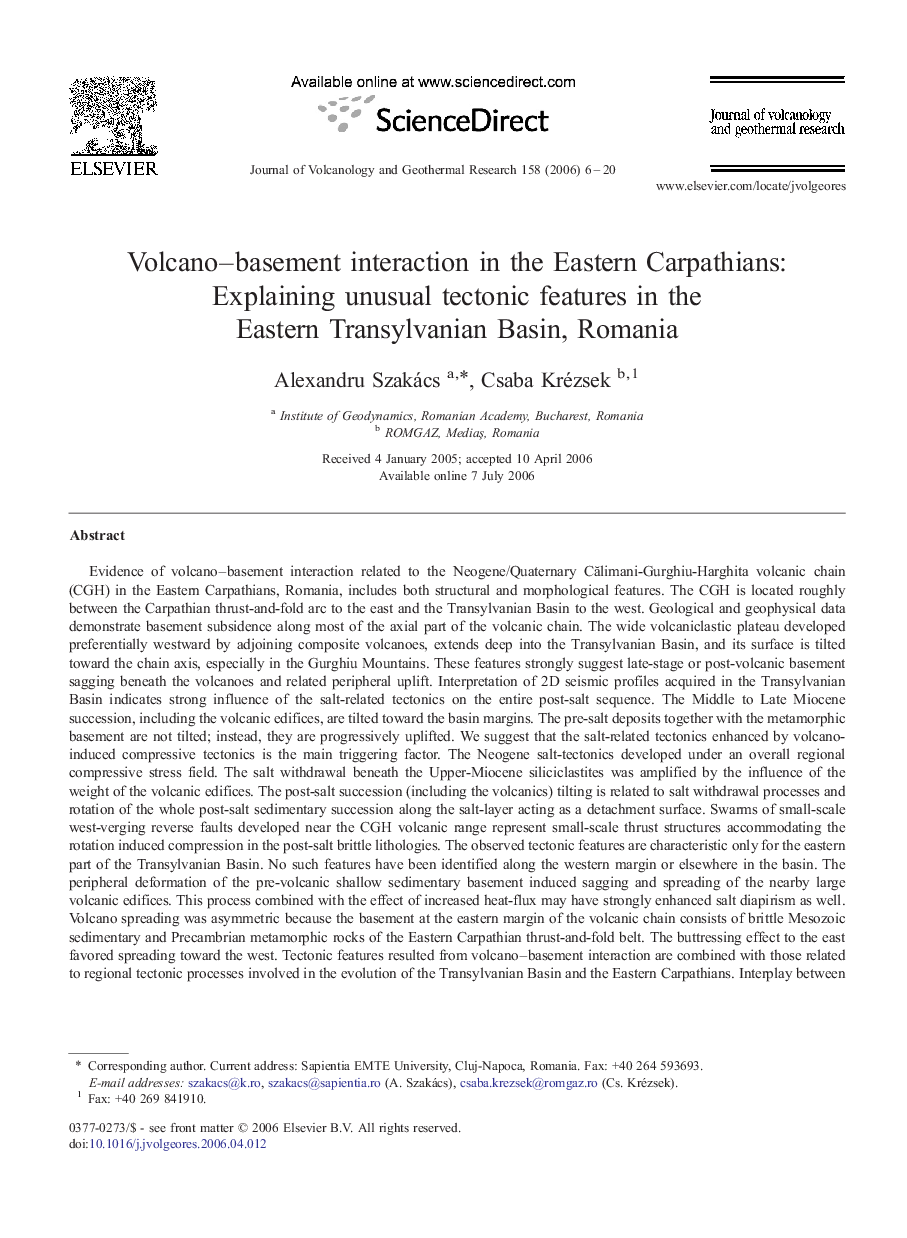| کد مقاله | کد نشریه | سال انتشار | مقاله انگلیسی | نسخه تمام متن |
|---|---|---|---|---|
| 4715329 | 1638471 | 2006 | 15 صفحه PDF | دانلود رایگان |

Evidence of volcano–basement interaction related to the Neogene/Quaternary Călimani-Gurghiu-Harghita volcanic chain (CGH) in the Eastern Carpathians, Romania, includes both structural and morphological features. The CGH is located roughly between the Carpathian thrust-and-fold arc to the east and the Transylvanian Basin to the west. Geological and geophysical data demonstrate basement subsidence along most of the axial part of the volcanic chain. The wide volcaniclastic plateau developed preferentially westward by adjoining composite volcanoes, extends deep into the Transylvanian Basin, and its surface is tilted toward the chain axis, especially in the Gurghiu Mountains. These features strongly suggest late-stage or post-volcanic basement sagging beneath the volcanoes and related peripheral uplift. Interpretation of 2D seismic profiles acquired in the Transylvanian Basin indicates strong influence of the salt-related tectonics on the entire post-salt sequence. The Middle to Late Miocene succession, including the volcanic edifices, are tilted toward the basin margins. The pre-salt deposits together with the metamorphic basement are not tilted; instead, they are progressively uplifted. We suggest that the salt-related tectonics enhanced by volcano-induced compressive tectonics is the main triggering factor. The Neogene salt-tectonics developed under an overall regional compressive stress field. The salt withdrawal beneath the Upper-Miocene siliciclastites was amplified by the influence of the weight of the volcanic edifices. The post-salt succession (including the volcanics) tilting is related to salt withdrawal processes and rotation of the whole post-salt sedimentary succession along the salt-layer acting as a detachment surface. Swarms of small-scale west-verging reverse faults developed near the CGH volcanic range represent small-scale thrust structures accommodating the rotation induced compression in the post-salt brittle lithologies. The observed tectonic features are characteristic only for the eastern part of the Transylvanian Basin. No such features have been identified along the western margin or elsewhere in the basin. The peripheral deformation of the pre-volcanic shallow sedimentary basement induced sagging and spreading of the nearby large volcanic edifices. This process combined with the effect of increased heat-flux may have strongly enhanced salt diapirism as well. Volcano spreading was asymmetric because the basement at the eastern margin of the volcanic chain consists of brittle Mesozoic sedimentary and Precambrian metamorphic rocks of the Eastern Carpathian thrust-and-fold belt. The buttressing effect to the east favored spreading toward the west. Tectonic features resulted from volcano–basement interaction are combined with those related to regional tectonic processes involved in the evolution of the Transylvanian Basin and the Eastern Carpathians. Interplay between regional stress fields and local volcano-induced stress may best account for the complexity of tectonic features recorded in the eastern Transylvanian Basin.
Journal: Journal of Volcanology and Geothermal Research - Volume 158, Issues 1–2, 1 November 2006, Pages 6–20